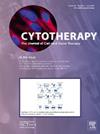超越精度:脱靶聚类规则间隔短回文重复序列/ cas9介导的基因组编辑的评估。
IF 3.7
3区 医学
Q2 BIOTECHNOLOGY & APPLIED MICROBIOLOGY
引用次数: 0
摘要
CRISPR /Cas9基因编辑系统由于其在精确修饰基因组方面的适用性,使得基因编辑领域发展迅速。在其多种应用中,基因疾病的纠正已成为迄今为止无法治愈的许多疾病的潜在治疗方法。尽管它在实现治疗水平的纠正方面效率很高,但在将这些新策略转化为临床时,由于CRISPR/Cas9核酸酶活性而导致的编辑的意想不到的不良影响是一个主要问题。已经开发了多种计算机工具和经验方法来评估这些脱靶编辑以及基因组的其他不利改变,包括重排,不仅在离体实验中,而且在体内实验中。在这篇综述中,我们总结了现有的评估CRISPR/Cas9系统脱靶效应的方法,并强调了它们的优点和局限性。将特别关注它们在临床前研究和临床试验中的应用,无论是在生产产品还是在患者的长期随访中。本文章由计算机程序翻译,如有差异,请以英文原文为准。
Beyond precision: evaluation of off-target clustered regularly interspaced short palindromic repeats/Cas9–mediated genome editing
The gene editing field has advanced rapidly since the development of the clustered regularly interspaced short palindromic repeats (CRISPR)/Cas9 system because of its applicability in precisely modifying the genome. Among its multiple applications, the correction of genetic diseases has emerged as a potential curative treatment for many disorders that have eluded a cure to date. Despite its efficiency in achieving therapeutic levels of correction, the unexpected adverse effects of editing due to CRISPR/Cas9 nuclease activity are a major concern when translating these new strategies to the clinic. Multiple in silico tools and empirical methods have been developed to evaluate these off-target edits as well as other adverse alterations of the genome, including rearrangements, not only in ex vivo experiments but also in in vivo experiments. In this review, we summarize the available methods for the assessment of off-target effects of CRISPR/Cas9 systems, highlighting their advantages and limitations. Special attention will be paid to their application in pre-clinical studies and clinical trials, both in the manufacturing product and in the long-term follow-up of patients.
求助全文
通过发布文献求助,成功后即可免费获取论文全文。
去求助
来源期刊

Cytotherapy
医学-生物工程与应用微生物
CiteScore
6.30
自引率
4.40%
发文量
683
审稿时长
49 days
期刊介绍:
The journal brings readers the latest developments in the fast moving field of cellular therapy in man. This includes cell therapy for cancer, immune disorders, inherited diseases, tissue repair and regenerative medicine. The journal covers the science, translational development and treatment with variety of cell types including hematopoietic stem cells, immune cells (dendritic cells, NK, cells, T cells, antigen presenting cells) mesenchymal stromal cells, adipose cells, nerve, muscle, vascular and endothelial cells, and induced pluripotential stem cells. We also welcome manuscripts on subcellular derivatives such as exosomes. A specific focus is on translational research that brings cell therapy to the clinic. Cytotherapy publishes original papers, reviews, position papers editorials, commentaries and letters to the editor. We welcome "Protocols in Cytotherapy" bringing standard operating procedure for production specific cell types for clinical use within the reach of the readership.
 求助内容:
求助内容: 应助结果提醒方式:
应助结果提醒方式:


